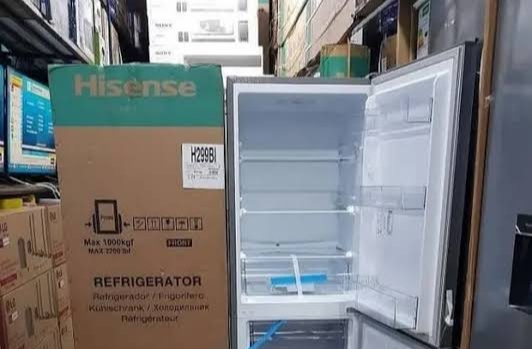Is your Hisense mini fridge not cooling? This can be a frustrating experience, especially if you rely on it to keep your food and drinks fresh and cold.
There are several reasons why your fridge may not be cooling properly, and it’s important to troubleshoot the issue to avoid food spoilage and prevent costly repairs.
Here in this article, I’ll explore some common causes of a Hisense mini fridge not cooling and provide solutions to help you get it up and running again.
One of the most common reasons for a Hisense mini fridge not cooling is a faulty door seal.
If the door doesn’t close properly or the seal is damaged or dirty, cold air can escape, causing the fridge to work harder and not cool as effectively.
Another possible cause is a clogged vent, which can prevent proper air flow and cause the fridge to overheat.
Additionally, a dirty condenser coil can also cause cooling problems, as it can’t exchange hot air outside the fridge for cold air inside.
By identifying the underlying cause of your fridge’s cooling issues, you can take the necessary steps to fix it and keep your food fresh and cool.
How to Fix Hisense Mini Fridge Not Cooling

If your Hisense mini fridge is not cooling, there are a few things you can do to troubleshoot the issue before calling a professional.
Here are some steps to follow:
Check if the fridge is properly plugged in. Make sure the plug is securely inserted into the socket and try plugging another appliance into the same socket to ensure it is working.
Examine the door latch of the fridge. If the latch is dirty, gently wipe it down to clean off the grime.
This will ensure that the door is properly closed and the fridge can maintain its temperature.
Check the evaporator fan motor. This component is responsible for producing and blowing cold air through the fridge’s evaporator coils to cool it down.
If the fan motor stops working, the airflow over the coils will be reduced, causing the fridge not to cool properly.
Inspect the condenser coils for dirt and debris. Dirty coils can lead to decreased cooling, so make sure they are clean. You can use a soft brush or vacuum to clean them.
Ensure that the fridge is not overloaded with food. Overloading the fridge can cause it to work harder to maintain its temperature, which can lead to it not cooling properly.
Check for any damage to the fridge’s seals. Damaged seals can also affect cooling performance, so make sure they are in good condition.
By following these troubleshooting steps, you may be able to resolve the issue with your Hisense mini fridge not cooling.
If the problem persists, it may be time to call a professional for further assistance.
Professional Repair and Maintenance

If you have tried the troubleshooting steps mentioned earlier and your Hisense mini fridge is still not cooling, it may be time to seek professional repair and maintenance services.
Here are some things to consider when looking for a professional:
- Look for a licensed and experienced technician who specializes in refrigerator repair.
- Check online reviews and ratings to ensure the technician has a good reputation.
- Ask for a quote before agreeing to any repairs.
- Consider the cost of repairs versus the cost of a new fridge.
- If your fridge is still under warranty, contact Hisense for assistance.
Professional repair and maintenance can involve a range of services, including:
- Cleaning the condenser coils to improve cooling efficiency.
- Replacing damaged or worn out door seals.
- Repairing or replacing the compressor, evaporator fan motor, or condenser fan motor.
- Checking and replacing the thermostat, start relays, or control board if necessary.
Remember, regular maintenance can help prevent issues with your Hisense mini fridge. You can do this by:
- Cleaning the fridge regularly, both inside and out.
- Checking and replacing the door seals if they are damaged or worn out.
- Avoiding overloading the fridge, which can affect cooling efficiency.
- Keeping the fridge away from direct sunlight and heat sources.
- Checking the temperature settings and adjusting as necessary.
Preventive Measures for Future
To avoid facing the issue of your Hisense mini fridge not cooling in the future, there are a few preventive measures you can take.
Firstly, make sure to keep the condenser coils clean. Dirty coils can lead to decreased cooling performance and can even cause the fridge to stop cooling altogether.
You can use a brush or a vacuum to clean the coils regularly.
Secondly, check the door seal regularly to ensure that it is not damaged.
A damaged seal can cause cool air to escape, leading to decreased cooling performance. If you notice any damage, replace the seal immediately.
Thirdly, avoid overloading the fridge with too many items. Overloading can cause the fridge to work harder, leading to decreased cooling performance.
Lastly, make sure to place the fridge in a well-ventilated area.
If the fridge is placed in a cramped or poorly ventilated area, it can lead to decreased cooling performance and can even cause the fridge to stop cooling altogether.
By following these preventive measures, you can ensure that your Hisense mini fridge continues to cool efficiently and effectively.



